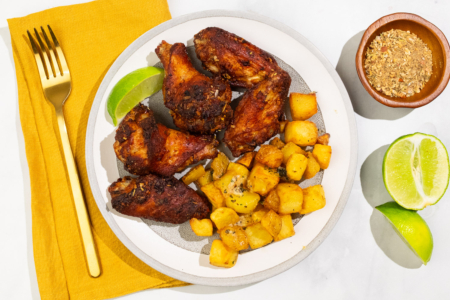No meal in India is complete without this table essential flatbread.
History Of Roti
There are a lot of stories behind the history of roti. Some say that it originated in the Egyptian Indus valley, while some claim it to have been created in East Africa. However, there has been ample evidence of roti originating in Southern India which may point more directly to its origin. A 16th century Sanskrit text mentions the origin of roti as having been invented in the kitchen of the Mughal Emperor Akbar in 1556. Agriculture was a major occupation in India back then. The farmers were able to grow wheat and other grains. Which, when ground and mixed with water, produce roti. Roti became essential for travelers as it was easy to make and extremely filling.

Flavor of Roti
There are many different types of rotis in today’s world but the most common is the phulka roti. How exactly can one define the taste of roti though? Roti isn’t sweet or salty or spicy. Roti is generally mild with little taste, which makes it a great base for other tastes like curries. You can taste the essence of the wheat in a roti as it gets speckled and puffed up, turning golden brown and crisp on the flame.
Health Benefits of Roti
A plain wheat roti is a source of soluble fiber that helps keep blood cholesterol levels low and provides digestive aid. It is loaded with carbohydrates that give you energy and keep you satiated for hours. The phosphorus in roti is good for the bones. It is also good for the skin as it is rich in zinc. Roti is filled with nutrients of all types and is a beneficial addition to your daily diet.

Culinary Benefits of Roti
Roti is a staple diet item in nearly every Indian household. It is generally a base dish that isn’t typically consumed on its own, but plays an important supporting role on the dining table. Everyone knows about its basic daily use but what about the amazing dishes that can be prepared using roti?

Roti can be used to make crispy and healthy chips that are a delicious alternative to the ones available in the market.
Want a healthy alternative for white bread? Use roti as your base and add your favorite veggies to it. You can also use it as an alternative for tortillas to make quesadillas or fajitas.
Roti is the chameleon of foods. It can be used to make amazing and healthy dishes like wraps, sandwiches, quesadillas, burritos, and a lot more! Roti is a perfect accomplishment with any main course. So, make this palak paneer recipe, and serve it alongside a stack of roti for a delicious and nutritious meal. Want to make roti yourself at home? Try out this recipe.

Types of Roti
Indian households have come up with many different types of rotis. The most common is the phulka roti made from wheat flour. Then there is Makki roti which is famous in the Northern part of India. It is made from corn flour. The state of Karnataka in southwestern India is known for Akki roti which is prepared with rice flour. Roti has taken various forms in different parts of the world. It can be made from pretty much any kind of flour and it will taste good.
Storage
Roti is a perishable food. Hence, it needs to be wrapped in aluminum foil and placed in an airtight container to preserve it for a couple of days. If you want to store it for 2 months, then it is recommended to be stored in the freezer immediately after making it.
Feature Image: Sandeep Barot from Pixabay




lots of mistakes in this article! What is the *Egyptian* Indus valley pray tell? The Indus is the river that gave INDIA it’s name!! And while breads were common in antiquity, the name was probably not “roti” outside the Indian subcontinent and that did NOT originate in a Mughal kitchen or in South India. It’d help to do a bunch of proper research and certainly fact-checks before putting information out there.